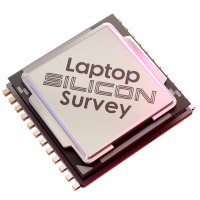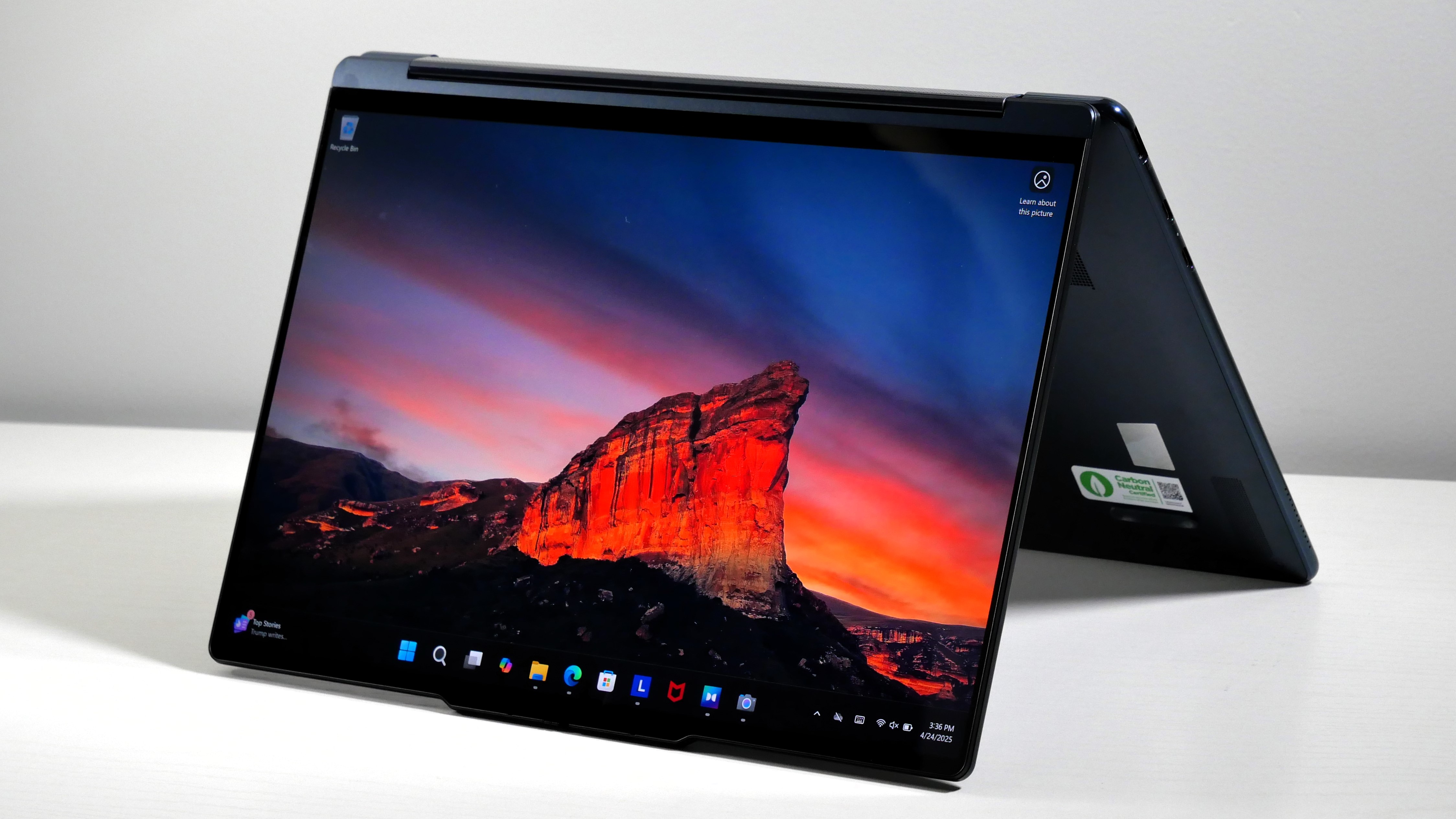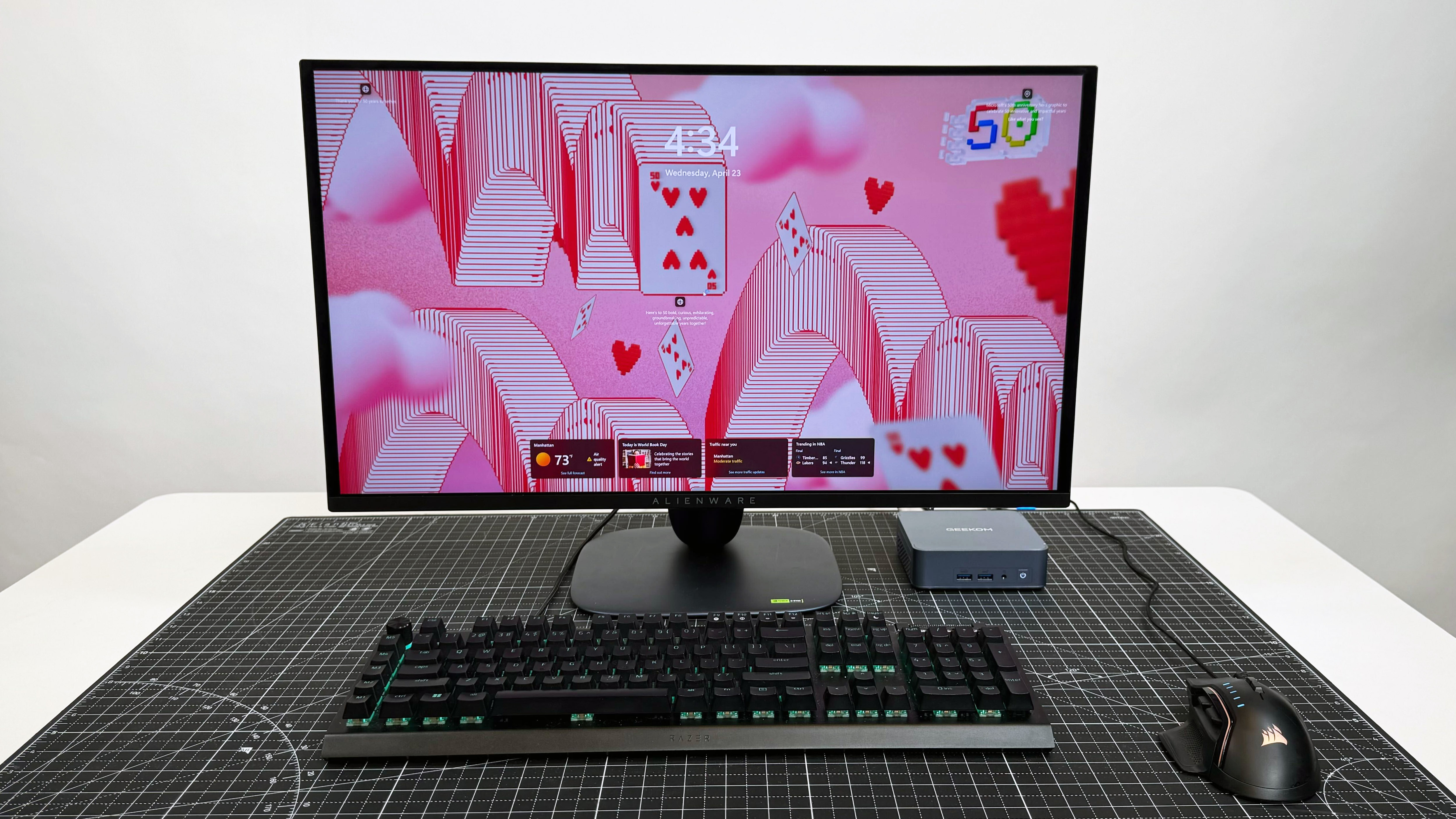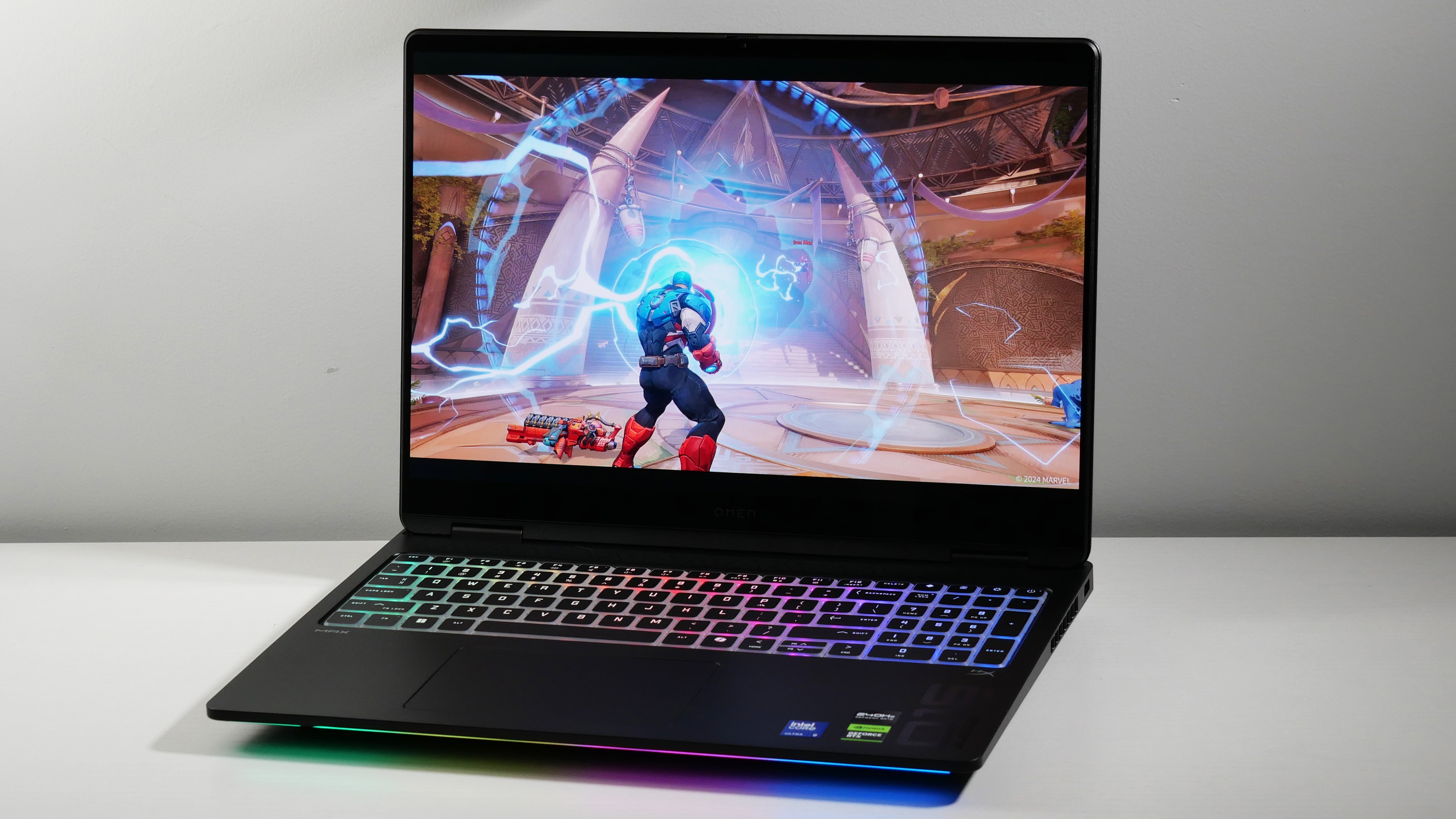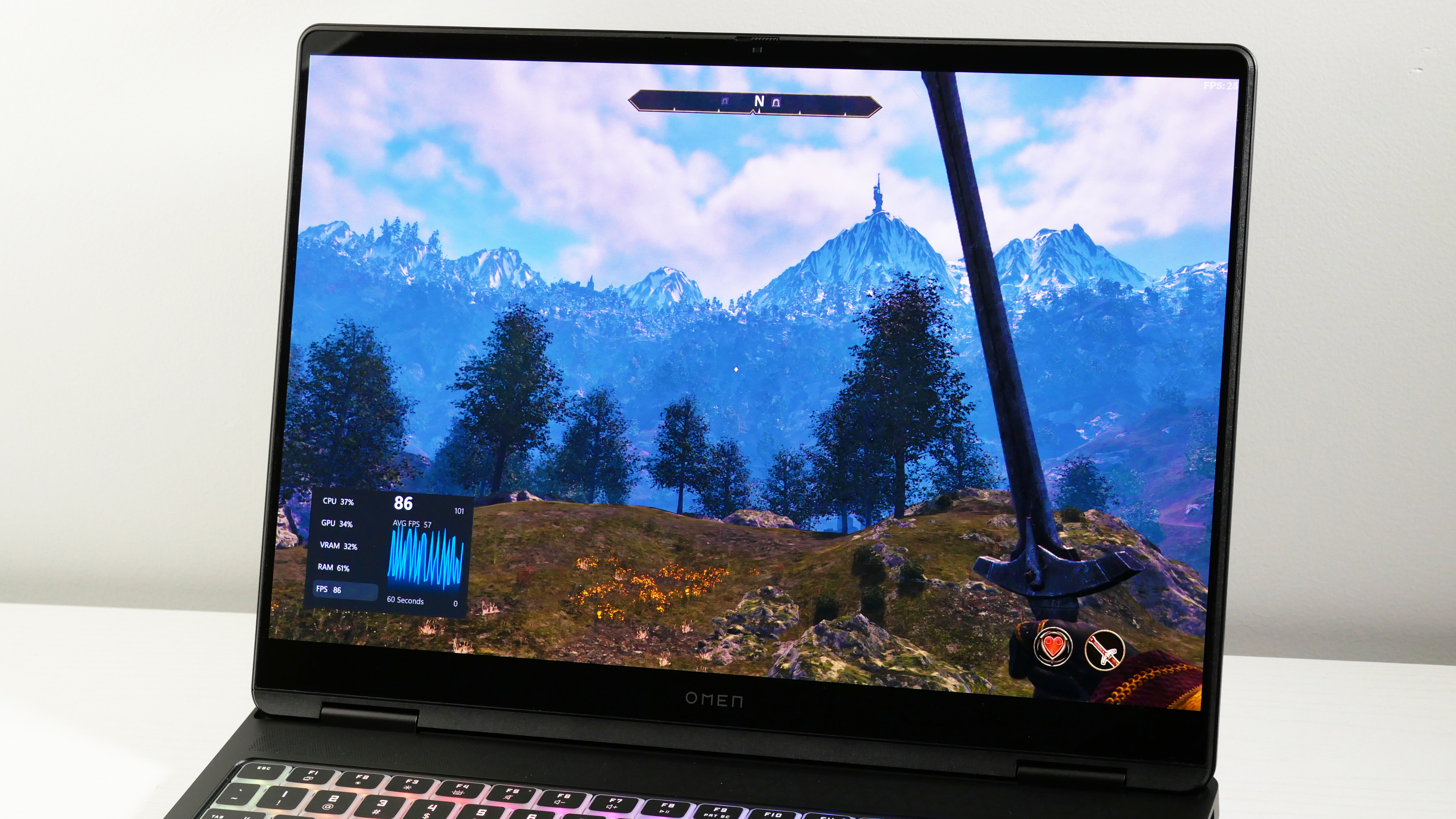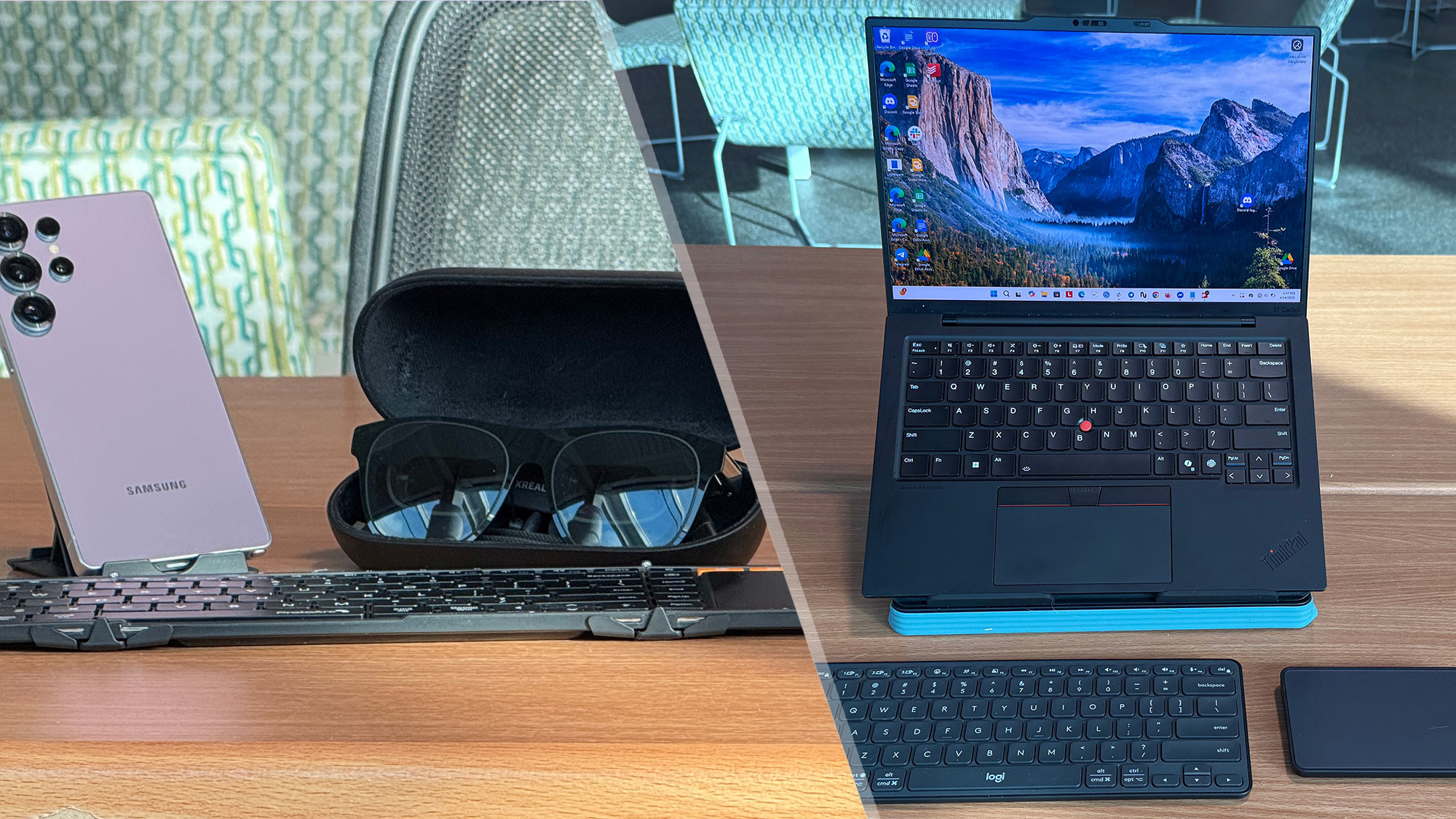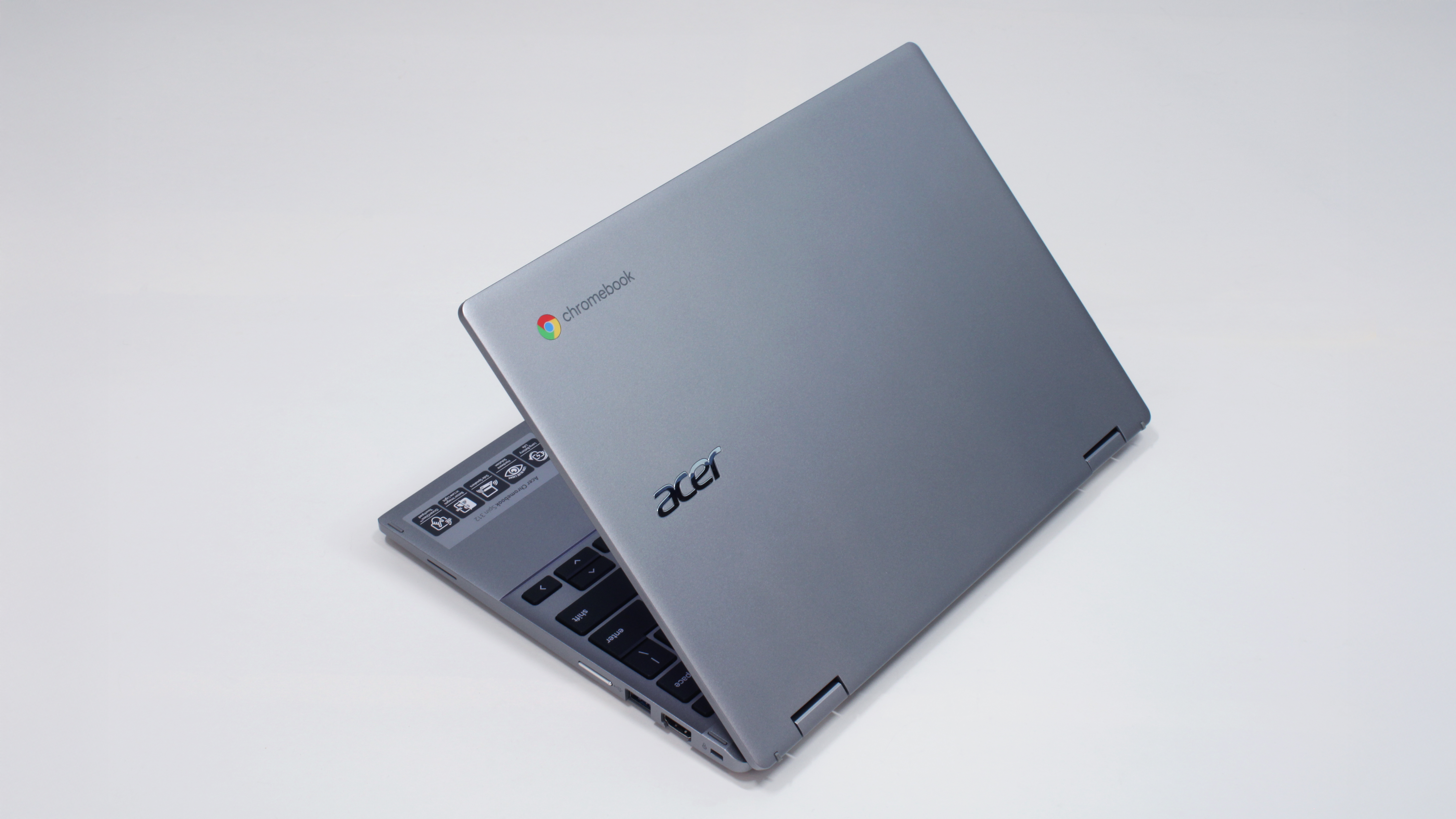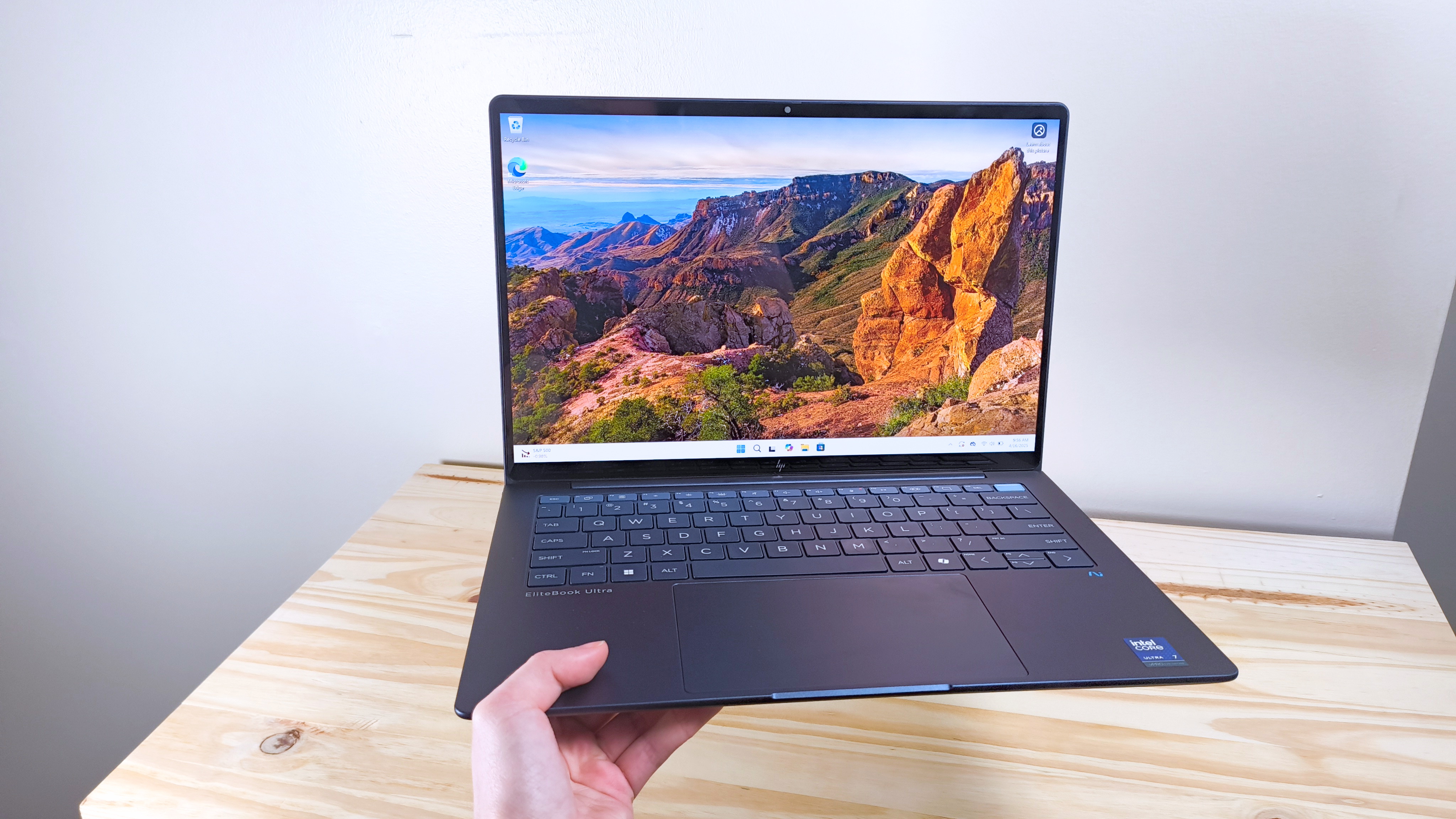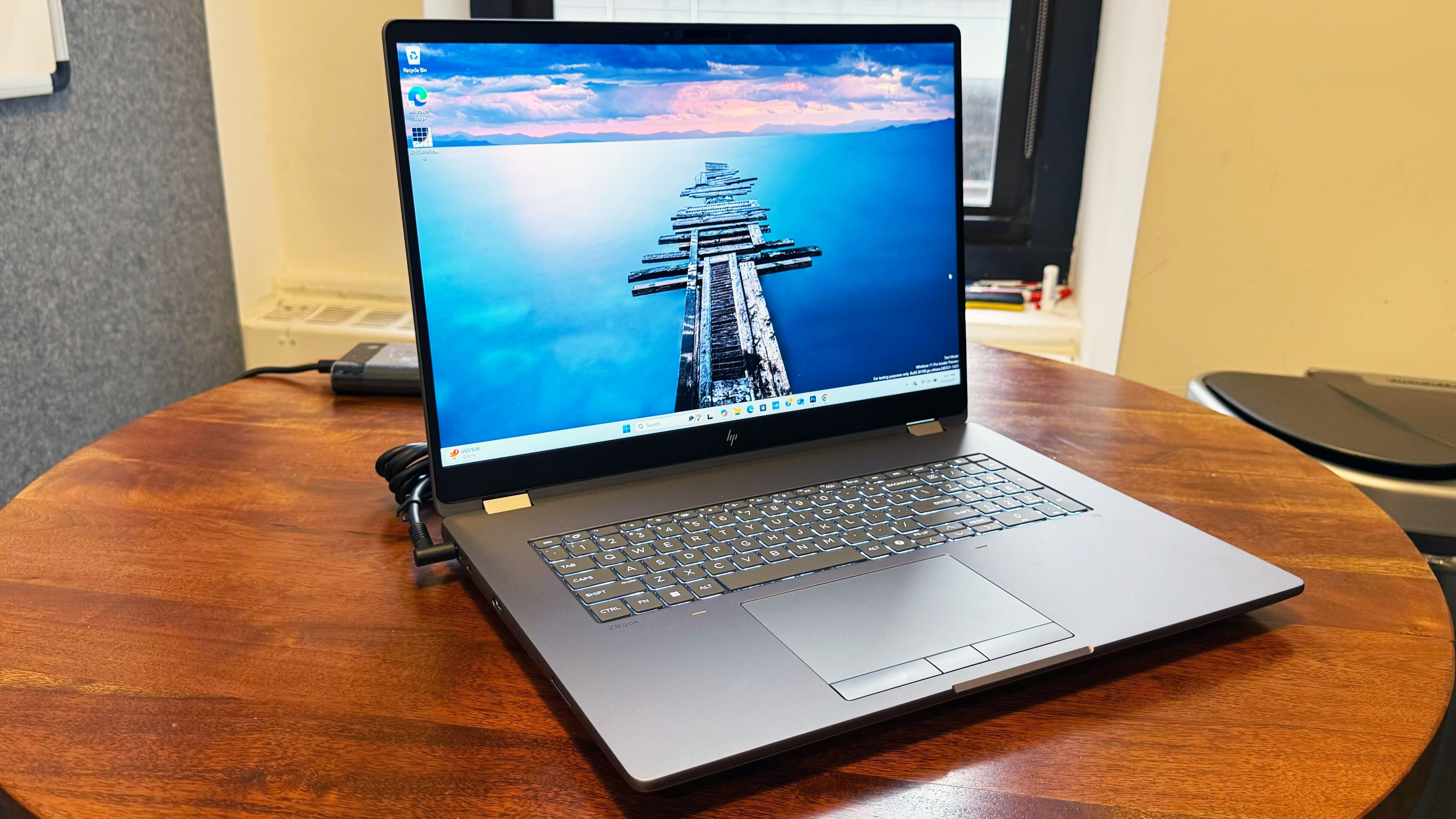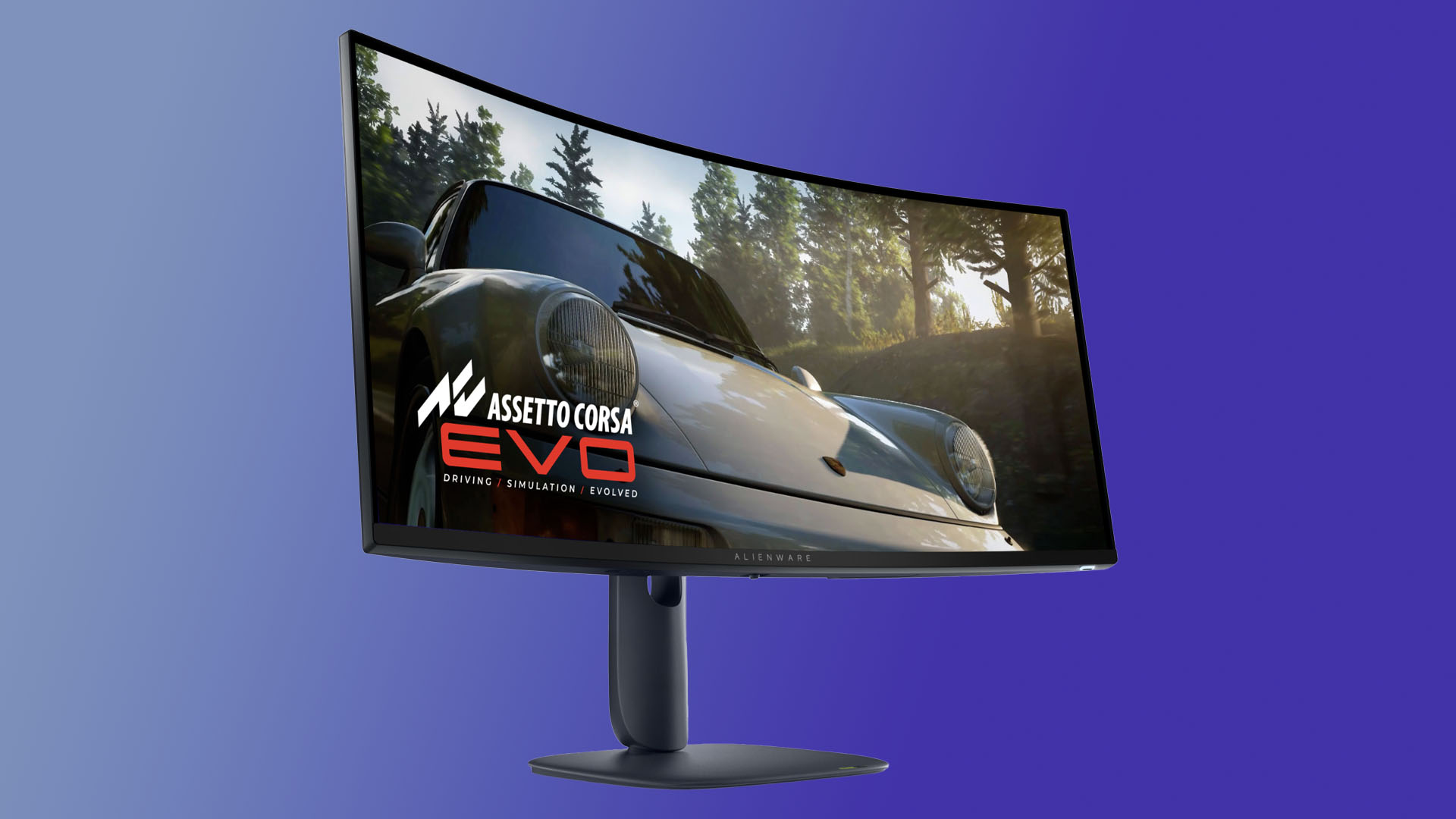“AI is dramatically reshaping many industries, including gaming”: Nvidia’s Jesse Clayton muses on the AI-powered future of gaming
If any company can get gamers behind AI, it would be Nvidia

The worlds of AI and video games may not be as different as you might think, and Nvidia is a major name in both arenas.
“AI is dramatically reshaping many industries, including gaming,” Nvidia’s Jesse Clayton tells Laptop Mag in a recent interview.
“The AI gaming innovations that you see in the [RTX] 50 Series, such as DLSS 4, require a lot of hard work and dedication from some of the world's best graphics and AI experts within Nvidia”, Clayton says.
So, how much will AI shape gaming in the years ahead? A prediction from Clayton, who is a 19-year veteran of Nvidia and its Director of Product Management and Product Marketing for Windows AI, has the answer:
“These neural rendering innovations are laying the path for the future of gaming.”
This article is part of a Laptop Mag special issue featuring exclusive interviews interviews with Apple, AMD, Intel, Qualcomm, Nvidia, and more as we learn how their silicon will shape the future of CPUs and GPUs, check out Laptop Mag's Silicon Survey 2025 special issue for more.
The Nvidia GeForce RTX gaming standard
Nvidia’s GTX and RTX gaming GPUs have dominated the field for years. While AMD and Intel are now both players in the discrete GPU market, most gamers will still opt for the Nvidia card, thanks to its years of hardware and software optimizations.
These neural rendering innovations are laying the path for the future of gaming.
Jesse Clayton, Director of Product Management and Product Marketing for Windows AI, Nvidia
PC hardware enthusiasts will have noticed that Nvidia’s new RTX 50-series “Blackwell” GPUs still use the same TSMC 4N five-nanometer process as the RTX 40-series graphics cards. Clayton tells Laptop Mag that “the 4N process provides us with the best combination of performance, power, and price for our GeForce RTX 50 series GPUs.”
However, Nvidia has invested in more than just hardware. “Nvidia’s AI software platform, which has been in development for more than a decade, enables developers to get the most out of their RTX GPUs,” Clayton says.
Because Nvidia considers DLSS, Nvidia Broadcast, RTX HDR, and ACE part of the gaming and AI portfolios, Nvidia’s hardware and software updates tend to include optimizations for gaming and AI workflows.
AI has become an integral part of gaming, content creation, development, and more. GeForce RTX GPUs are designed to accelerate those games and applications.
Jesse Clayton, Director of Product Management and Product Marketing for Windows AI, Nvidia
Not only does Nvidia push out driver updates for better game optimization, but Nvidia’s DLSS frame generation technology is often considered the best in the business.
With Nvidia’s DLSS 4, you can still notice some art degradation when upscaling a game from a lower resolution, but the frames are generated seamlessly, which has several advantages.
Clayton says AI is partly responsible for that change: “AI has become an integral part of gaming, content creation, development, and more. GeForce RTX GPUs are designed to accelerate those games and applications and the new AI innovations being integrated into them.”
While you can still game without AI assistance, Nvidia will continue to develop and optimize for the new technology. Clayton credits AI for many of Nvidia’s recent successes, musing, “It’s because of [AI] that we see the incredible advancement with technologies like DLSS, NVIDIA Broadcast, and RTX HDR.”
Taking the AI leadership
While much of the industry has invested in the NPU as a new AI accelerator, Nvidia is still primarily focused on GPU-driven AI features and applications.
But, as Clayton tells Laptop Mag, “If anything, the introduction of the NPU is validation of the appetite for AI and the need for more compute.” Both hardware accelerators — NPUs and GPUs — have their individual uses.
“While NPUs will be useful for lightweight, always-on AI applications, GPUs power the advanced AI workloads we see across gaming, content creation, development, and other demanding use cases.”
The capabilities of AI are only going to be limited by the capabilities of accelerators available to run it.
Jesse Clayton, Director of Product Management and Product Marketing for Windows AI, Nvidia
We can continue to expect a heavy investment into AI from Nvidia, built around the GPU. After all, “AI is perhaps the fastest moving technology in the history of computing, and there is no question that the applications for AI and the demand for AI is accelerating,” Clayton says. So Nvidia needs to keep up to maintain its edge, even as dark horse AI candidates like DeepSeek crop up overnight.
Because AI is still in its nascent stage, there’s a lot Clayton is looking forward to. “We’re really just at the beginning,” he says. “Developers are starting to experiment with AI workloads that include multiple modalities and model types to create advanced, next-generation use cases, but working with AI remains a challenge.”
AI applications and features are still finding new areas for innovation, he continues.“We’re now seeing complex AI workloads emerging, like application assistants, digital humans, and autonomous agents that work across communication modalities. The capabilities of AI are only going to be limited by the capabilities of accelerators available to run it.”
Nvidia keeps diversifying its AI hardware, too. “With the introduction of Project DIGITS, powered by the GB10 Grace Blackwell Superchip, we are bringing the power of the Grace Blackwell SOC [System-on-a-Chip] architecture from the data center to the desktop to help meet the increasing need for AI compute for developers in a compact, power-efficient system.”
Nvidia 2025 roadmap and what’s ahead
Nvidia also announced the RTX 5090, RTX 5080, RTX 5070 Ti, and RTX 5070 at CES in January. The RTX 5090 and RTX 5080 desktop GPUs are already available, with the RTX 5070 Ti and RTX 5070 soon to come. Also announced at CES 2025 were the laptop variants of the RTX 50-series, with laptops expected to launch in March.
Nvidia and MediaTek’s “Project Digits” AI mini-PC is expected to be released in May.
The company’s roadmap for the future is destined to meet the ever-increasing demand for AI. “In order to accelerate [AI adoption], we recently announced Nvidia NIM for RTX, which are pre-packaged microservices that make it easy to start working with the latest models, and AI blueprints for RTX, which are reference projects for complex AI workflows.”
While gamers and PC enthusiasts have been skeptical about the prospect AI improving the art, experience, and enjoyment of video games, if any company can convince them to open their minds to the impact of artificial intelligence, it would be Nvidia.

A former lab gremlin for Tom's Guide, Laptop Mag, Tom's Hardware, and TechRadar; Madeline has escaped the labs to join Laptop Mag as a Staff Writer. With over a decade of experience writing about tech and gaming, she may actually know a thing or two. Sometimes. When she isn't writing about the latest laptops and AI software, Madeline likes to throw herself into the ocean as a PADI scuba diving instructor and underwater photography enthusiast.
You must confirm your public display name before commenting
Please logout and then login again, you will then be prompted to enter your display name.
